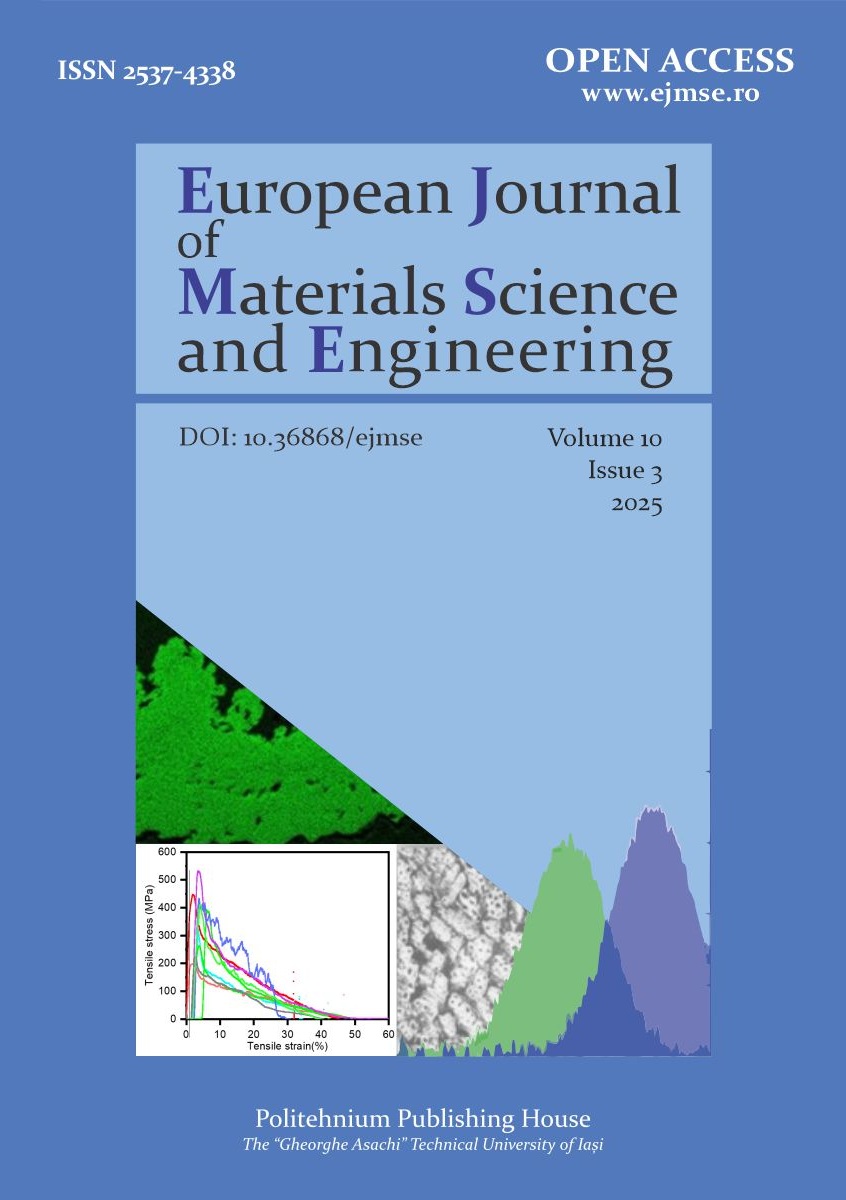A STUDY ON THE FABRICATION OF A SMART WATER QUALITY SENSOR FOR SEMICONDUCTOR CLUSTER ULTRA-PURE WATER FACILITIES
European Journal of Materials Science and Engineering, Volume 10, Issue 3, 2025
PDF Full Article, DOI: 10.36868/ejmse.2025.10.03.165, pp. 165-172
Published: September 20, 2025
Juhyeong KIL1,*
1 Lotus Prosuming Management, 3F, 3 Hangeulbiseok-ro 46na-gil, Nowon-gu, Seoul, Korea
* Corresponding author: kjh@lotuselectrode.com
Abstract
Semiconductor manufacturing is a high-precision industry that demands an ultra-clean environment, where the stable and high-quality supply of ultra-pure water (UPW) plays a pivotal role. Within semiconductor clusters, even minor fluctuations in UPW quality can significantly impact product yield and process reliability. As such, real-time and high-precision control of key water quality parameters—including electrical conductivity (EC) is essential. EC serves as a critical indicator of ionic concentration in water and is highly sensitive to temperature. It also exhibits strong correlations with total dissolved solids (TDS) and degas equilibrium quality (DEQ), both of which are important for evaluating the purity and degassing efficiency of UPW. This study presents the design and development of a smart EC-based water quality sensor module, specifically optimized for UPW systems in semiconductor manufacturing facilities. The proposed sensor integrates a high-precision EC measurement cell and a temperature sensor into a compact unit, supported by an embedded microcontroller-based algorithm. This architecture enables real-time output of temperature-compensated EC values, as well as calculated TDS and DEQ metrics, all within a single sensing platform. The performance of the developed sensor was evaluated under various operating conditions, demonstrating superior accuracy, repeatability, response time, and long-term stability when compared to conventional commercial sensors. Additionally, the compact, all-in-one design offers practical advantages in terms of space efficiency and maintenance simplicity. This research provides a practical implementation of a high-reliability, high-sensitivity water quality monitoring solution, and establishes a technical foundation for smart water management infrastructure in next-generation semiconductor fabrication environments.”
Keywords: Electrical Conductivity Sensor, Ultra-Pure Water, UPW, Semiconductor Cluster, Total Dissolved Solids, TDS, Degas Equilibrium Quality, DEQ, Temperature Compensation), Real-Time Water Quality Monitoring, High-Precision Sensor).
References:
[1] Watanabe, H., et al. A review of dissolved oxygen monitoring techniques in semiconductor-grade water systems. Water Research, 157, 2019, pp. 490–502.
[2] Chen, L., Zhao, J., & Zhang, Y. Miniaturized multiparameter water sensors for industrial UPW systems. IEEE Transactions on Industrial Electronics, 67(12), 2020, pp. 10240–10249.
[3] Kil J. Introduction of residual chlorine sensor using constant voltage method and its measurement principles, European Journal of Materials Science and Engineering, 6(2), 2021, pp. 113-118.
[4] International Technology Roadmap for Semiconductors (ITRS). Environment, Safety & Health Chapter, 2015.
[5] Tsutsui, T., et al. Integration of EC and DO sensors for automated control in ultrapure water production. Journal of Water Process Engineering, 47, 2022, p. 102738.
[6] ISO 3696:1987. Water for analytical laboratory use — Specification and test methods.
[7] Kil J. A study on international communication standards and performance standards for smart water quality sensors, European Journal of Materials Science and Engineering, 7(2), 2022, pp. 117-127.
[8] Ozturk M.A., Unsal E. Yelkuvan A.F., Development of an Internet of Things-Based Ultra-Pure Water Quality Monitoring System, Sensors, 25(4), 2025, p. 1186; https://doi.org/10.3390/s25041186
[9] Nishu S.K., Smart and innovative nanotechnology applications for water purification, Hybrid Advances, 3, 2023, p. 100044.
[10] Kil J. A study on development of efficient column detection system in wastewater treatment of thermal power plants, European Journal of Materials Science and Engineering, 4(2), 2019, pp. 81-91.
